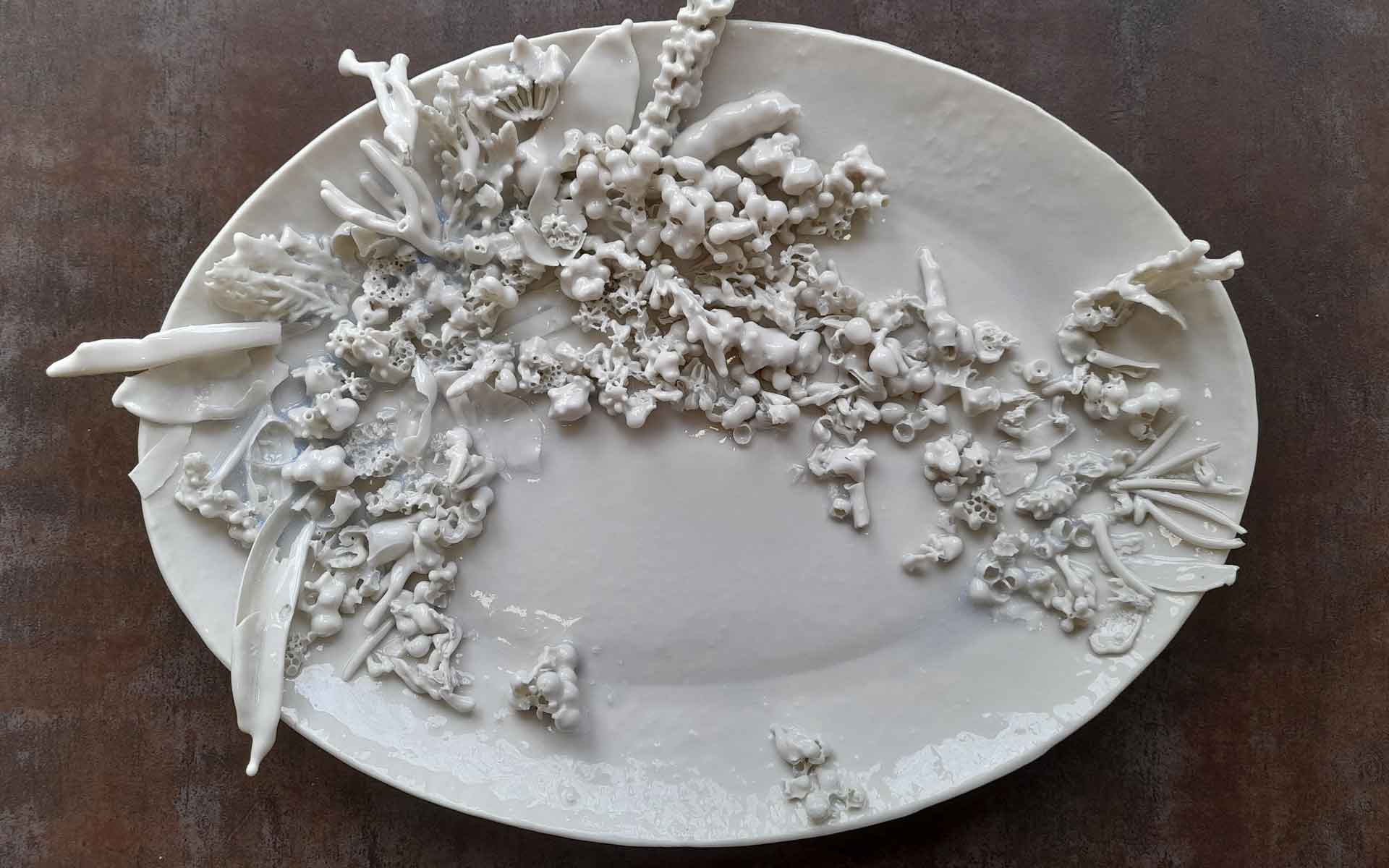
10 Feb ’A beautiful thing called Porcelain’ An Interview with Lucía Pol
Earlier this month, I had the pleasure of interviewing our talented ceramist Lucia Pol to learn more about her porcelain ceramic techniques. As we sit in the front of the 137º Ceramic Art Studio, Lucia is surrounded by her work, her hands and trousers are covered in the clay dust as she can’t help but touch and feel the clay. Lucia looks joyful, radiant, and we start chatting about flowers and the approach of Spring.
What was your inspiration for the plate project, how did it all begin?
This project is framed in ‘Anima Mesa’, which is a bigger project, it is all about creating customised tableware sets for families and trying to bring to the table the symbols and elements that brought the family together in the first place, historically. This plate in particular is for a family that are from Alicante, and they have a very interesting story, as they had to go through the Civil War. Because of this, the family got very damaged, and they started to fight with each other and they separated. Years after the war, they started to work on the garden of a massive land that was divided between the households. But it was through working in this garden and planting, bringing new life to this area, that they started to heal their emotional wounds. The idea of the tableware set is to bring the garden to the table.
Why do you choose porcelain amongst all varieties of clay?
I’ve practised ceramics in Venezuela since I was a child and porcelain is not a common material to find. Then when I came to Barcelona and did a postgraduate course in Escola Massana, I discovered this beautiful thing called porcelain. I fell in love with her personality, I think she’s a female, in Spanish she is ‘la porcelana’, I think of her as if she is a friend. Porcelain goes from being super wet, super soft and flexible, to being absolutely cracked and dry in a few seconds. But in this process, in her rhythm, the textures you get are so beautiful, so amazing. After it’s been fired, I get the feeling that every object finds its own shape, she finds her shape within the object. I’m new to working with porcelain, so she is the boss, I’m always making mistakes, but I’m really in love with the way she looks and behaves.
The textures and forms are simply amazing! Tell us how you created all the individual elements on the plate.
Among all the porcelain ceramic techniques, this is one called ‘slip-dip’. The slip is the liquid porcelain, which is a powder that you mix with water in a very precise measure. I took actual plants and flowers and little fruits and I dipped them into porcelain not just once, but 11, 12, 13 times, so the layer gets thick. I did that with every single plant and then I fired them. Of course, many of the things get destroyed, but a few shapes remained, and these are the shapes you see on the plate. Then I made the plate from a mould of a simple plate that I bought. I wanted to have that oval plate, because the family that I am talking about eat normally on these oval shape plates. I organised the textures that had survived onto the plate and then using a spray gun I sprayed the whole thing with glaze and fired at a high temperature.
What was the most challenging stage of the process?
It was a long process to do the slip-dip technique with each texture. When it dries, porcelain shrinks, so it’s just a matter of minutes until you dip it again and again. The most challenging thing is the timing. As for all the others porcelain ceramic techniques. And it’s about going back to the organic times. Nowadays we live in a world where you can cook a soup (that normally takes hours to cook) in a matter of minutes. Then you expect everything to be as quick as that. Everything’s microwaved, but your body is not. So we suffer, at least I suffer a lot with this quick rhythm. Ceramics forces you to go back to a more organic, slower time. It’s not easy, it’s very difficult. She doesn’t speak, but she is determined. You cannot change a crack if she is determined. So the difficult thing for me is to slow down and to learn the language and learn how to listen to her language, and it requires me to shut up.
Thank you Lucia for being part of our studio’s artistic comunity.
Written by Freya Saleh




